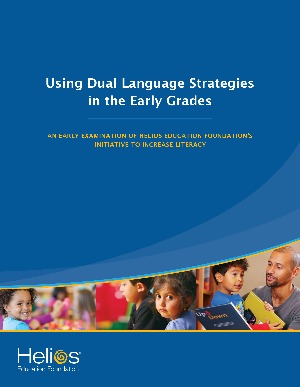Using Dual Language Strategies in the Early Grades
 Overview
Overview
As our communities become more diverse and our students not only exposed to, but also fluent in, multiple home languages, classroom instruction that does not capitalize on this diversity falls short of delivering a globally competitive education.
Recognizing the challenge of monolingual instruction among an increasingly multilingual student population, Helios Education Foundation and partners have engaged in the implementation of dual language learning within preschool classrooms in three school districts, two in Arizona and one in Florida. Orange County Public Schools in Florida have joined Helios’ partners, the Osborn and Creighton School districts in Arizona, to engage students aged three to five with two-way English/Spanish language immersion. The goal is to increase children’s literacy while also educating children to be billiterate and bicultural.
Research affirms that the ability to speak and read in more than one language offers social, cultural, cognitive, and economic benefits. Children who maintain fluency in their home language while also acquiring a second language in the classroom benefit on many levels. Not only do these students benefit from social and cultural relationships that monolingual students do not, but they also show an increased aptitude in phonological awareness, a precursor to learning to read and write in alphabetic languages like English. Additionally, as our workforce evolves globally, the ability to speak, read, and write multiple languages will only benefit students as they progress into college and career.
While the Helios Education Foundation Dual Language Learners program has yet to be fully implemented in both states, we have identified some early learnings that can improve future implementation. Led by Dr. Karen Ortiz, Dr. Paul Perrault, and our partners at Arizona State University, Childsplay, Inc., and Orlando Repertory Theatre, Inc., these early lessons focus on student engagement, student comprehension, teaching personnel, educator professional development, and the necessity of district and staff commitment.


